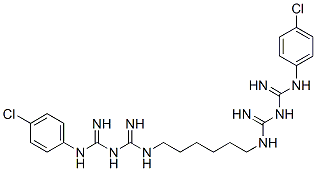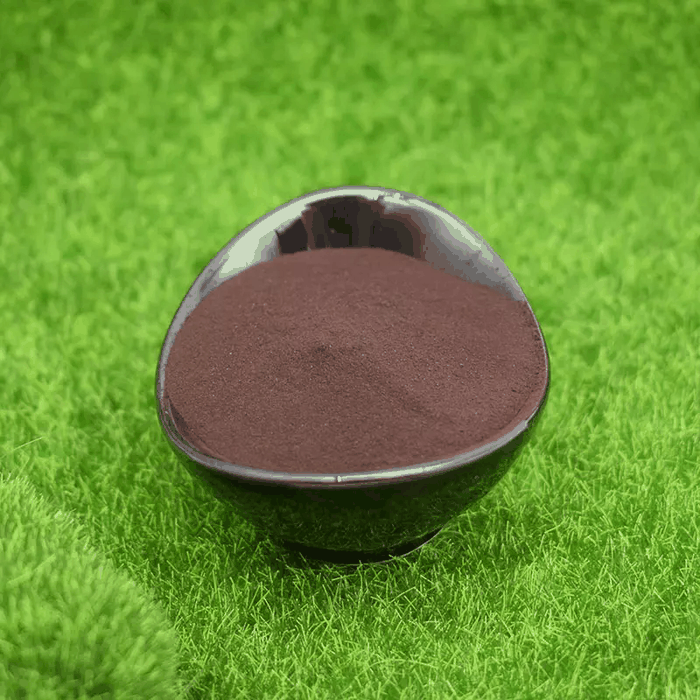Palladium (II) Acetate
Synonym(s):Palladium diacetate;Palladium(II) acetate;Palladium(II) acetate (47% Pd);Palladium(II) acetate impregnated tablets;Pd(OAc)2
- CAS NO.:3375-31-3
- Empirical Formula: Pd(CH3COO)2
- Molecular Weight: 224.51
- MDL number: MFCD00012453
- EINECS: 222-164-4
- SAFETY DATA SHEET (SDS)
- Update Date: 2025-07-24 18:13:45

What is Palladium (II) Acetate?
Chemical properties
Brown needles, soluble in benzene and toluene, insoluble in ether and alcohol, keep in dark and refrigerated.
The Uses of Palladium (II) Acetate
Palladium (II) Acetate Trimer is used in Suzuki-Miyaura cross-coupling reactions. It also serves to catalyze the chemoselective reduction of nitroarenes.
The Uses of Palladium (II) Acetate

The Iodo compound (308 mg, 0.513 mmol), the boronic ester (194 mg, 0.641 mmol), K3PO4 (327 mg, 1.539 mmol), XPhos (14.67 mg, 0.031 mmol), and Pd2(dba)3 (14.09 mg, 0.015 mmol) were combined in a microwave vial. The vial was purged with argon, after which time was added dioxane (3 mL) and H2O (0.5 mL) The reaction was irradiated in a microwave reactor at 120 C for 10 min. Additional boronic ester (50 mg) was added and the mixture was irradiated at 120 C for another 10 min. The mixture was then treated with aq 1N NaOH and extracted with EtOAc (50 mL). The org layer was dried (MgSO4), concentrated, and purified by flash chromatography (20% MeOH/DCM) to provide the product as a dark yellow solid. [177 mg, 53%]
What are the applications of Application
Palladium(II) acetate is a catalyst for intramolecular coupling
Definition
Palladium acetate is a chemical compound of palladium. It is used as a catalyst for many organic reactions and as a precursor to other palladium(II) compounds. Palladium is a chemical element with the chemical symbol Pd and an atomic number of 46. It is found as a free metal alloyed with gold and other platinum group metals and in the rare minerals cooperite and polarite. (Toxin and Toxin Target Database (T3DB))
Preparation
The synthesis of palladium acetate was first reported by Wilkinson et al.,where glacial acetic acid containing palladium powder is heated at reflux with a minimal amount of nitric acid until the generation of brown NOx fumes ceases. Although this is a relatively old method, it is still the most commercially employed route for the synthesis of palladium acetate, considering the process economics. Palladium (II) Acetate can be synthesized in two steps from palladium sponge via the intermediate dinitrate by first combining it with hot glacial acetic acid and nitric acid:
Pd + 2 HNO3 → Pd(NO3)2 + H2
Pd(NO3)2 + 2 CH3COOH → Pd(O2CCH3)2 + 2 HNO3
Reactions
- Efficient catalyst for the arylation of olefins (Heck reaction).
- Catalyst for cross-coupling reactions.
- Catalyst for C-H activation.
- Precatalyst for enantioselective decarboxylative protonation of allyl β-ketoesters.

General Description
Palladium(II) acetate is a homogenous oxidation catalyst. It participates in the activation of alkenic and aromatic compounds towards oxidative inter- and intramolecular nucleophilic reactions. Crystals of palladium(II) acetate have a trimeric structure, having symmetry D3h. Each of the palladium atoms in the crystals are joined to the other two by double acetate bridges. Microencapsulation of palladium(II) acetate in polyurea affords polyurea-encapsulated palladium(II) acetate. It is a versatile heterogeneous catalyst for various phosphine-free cross-coupling reactions. It participates as catalyst in the Heck coupling reaction of pthalides with different alkenes.
Flammability and Explosibility
Non flammable
Safety Profile
Moderately toxic by ingestion. When heated to decomposition it emits toxic vapors of palladium.
Purification Methods
It recrystallises from CHCl3 as purple crystals. It can be washed with AcOH and H2O and dried in air. Large crystals are obtained by dissolving it in *C6H6, adding half its volume of AcOH and allowing it to evaporate slowly at room temperature. It forms green adducts with nitrogen donors, it dissolves in KI solution to form solid PdI2 and a red solution of PdI42-, but is insoluble in aqueous saturated NaCl, and NaOAc. It dissolves in HCl to form PdCl42-. It is soluble in CHCl3, CH2Cl2, Me2CO, MeCN, Et2O, but it is insoluble in H2O, and decomposes when warmed in alcohols in which it is also insoluble. [Morehouse et al. Chem Ind (London) 544 1964, Stephenson et al. J Chem Soc 3632 1965, Skapski & Smart J Chem Soc (D) 658 1970, Heck Acc Chem Res 12 146 1979.]
Properties of Palladium (II) Acetate
| Melting point: | 205 °C |
| vapor pressure | 0.002Pa at 25℃ |
| storage temp. | Store below +30°C. |
| solubility | Soluble as monomer in glacial acetic acid or as trimer in benzene. |
| form | Various Forms In Red-(Powder/Flake/Crystalline/Beads) |
| appearance | Brown/orange solid |
| color | Red-brown |
| PH | 2-3 (H2O, 20℃)(aqueous suspension) |
| PH Range | 2.0 - 3.0 at 20 °C |
| Water Solubility | insoluble |
| Sensitive | Hygroscopic |
| λmax | 400nm(EtOH)(lit.) |
| Hydrolytic Sensitivity | 4: no reaction with water under neutral conditions |
| Merck | 14,6991 |
| BRN | 6086766 |
| CAS DataBase Reference | 3375-31-3(CAS DataBase Reference) |
| EPA Substance Registry System | Acetic acid, palladium(2+) salt (3375-31-3) |
Safety information for Palladium (II) Acetate
| Signal word | Danger |
| Pictogram(s) |
 Corrosion Corrosives GHS05  Exclamation Mark Irritant GHS07  Environment GHS09 |
| GHS Hazard Statements |
H317:Sensitisation, Skin H318:Serious eye damage/eye irritation H410:Hazardous to the aquatic environment, long-term hazard |
| Precautionary Statement Codes |
P261:Avoid breathing dust/fume/gas/mist/vapours/spray. P272:Contaminated work clothing should not be allowed out of the workplace. P273:Avoid release to the environment. P280:Wear protective gloves/protective clothing/eye protection/face protection. P302+P352:IF ON SKIN: wash with plenty of soap and water. P305+P351+P338:IF IN EYES: Rinse cautiously with water for several minutes. Remove contact lenses, if present and easy to do. Continuerinsing. |
Computed Descriptors for Palladium (II) Acetate
| InChIKey | PCUVQHHZCJMCHO-UHFFFAOYSA-M |
Palladium (II) Acetate manufacturer
JSK Chemicals
Vineeth Precious Catalysts Pvt. Ltd.
ASM Organics
New Products
4,4-Difluoropiperidine hydrochloride tert-butyl 9-methoxy-3-azaspiro[5.5]undecane-3-carboxylate Indole Methyl Resin N-Isopropylurea N,N-Dicyclohexylcarbodiimide(DCC) MELDRUMS ACID 5-METHYLISOXAZOLE-4-CARBOXYLIC ACID Magnessium Bis glycinate Zinc ascorbate 1-bromo-2-butyne 2-acetamidophenol 9(10H)-anthracenone Erythrosin B, 4-Piperidinopiperidine 2-((4-morpholinophenylamino) (methylthio) methylene) malononitrile 2,4-dihydroxybenzaldehyde 3-(4-morpholinophenylamino)-5-amino-1H-pyrazole-4-carbonitrile Methyl 2-methylquinoline-6-carboxylate 2,6-dichloro-4-nitropyridine 4-Bromo-2-chlorobenzonitrile 2-(benzylamino)acetic acid hydrochloride 4-(tert-Butoxycarbonylamino)but- 2-ynoic acid 3,4-dihydro-2H-benzo[b][1,4]dioxepine 1-Phenyl-1-cycloprppanecarboxylicacidRelated products of tetrahydrofuran



![hexakis[mu-(acetato-O:O')]-mu3-oxo-triangulo-triruthenium acetate](https://img.chemicalbook.in/CAS/GIF/55466-76-7.gif)




You may like
-
 Palladium (II) Acetate 99%View Details
Palladium (II) Acetate 99%View Details -
 Palladium(II) acetate CAS 3375-31-3View Details
Palladium(II) acetate CAS 3375-31-3View Details
3375-31-3 -
 Palladium(II) acetate CAS 3375-31-3View Details
Palladium(II) acetate CAS 3375-31-3View Details
3375-31-3 -
 Palladium(II) acetate CAS 3375-31-3View Details
Palladium(II) acetate CAS 3375-31-3View Details
3375-31-3 -
 Palladium(II) acetate CAS 3375-31-3View Details
Palladium(II) acetate CAS 3375-31-3View Details
3375-31-3 -
 Palladium(II) acetate CAS 3375-31-3View Details
Palladium(II) acetate CAS 3375-31-3View Details
3375-31-3 -
 Palladium (II) acetate, Trimer CAS 3375-31-3View Details
Palladium (II) acetate, Trimer CAS 3375-31-3View Details
3375-31-3 -
 Palladium acetate CASView Details
Palladium acetate CASView Details
